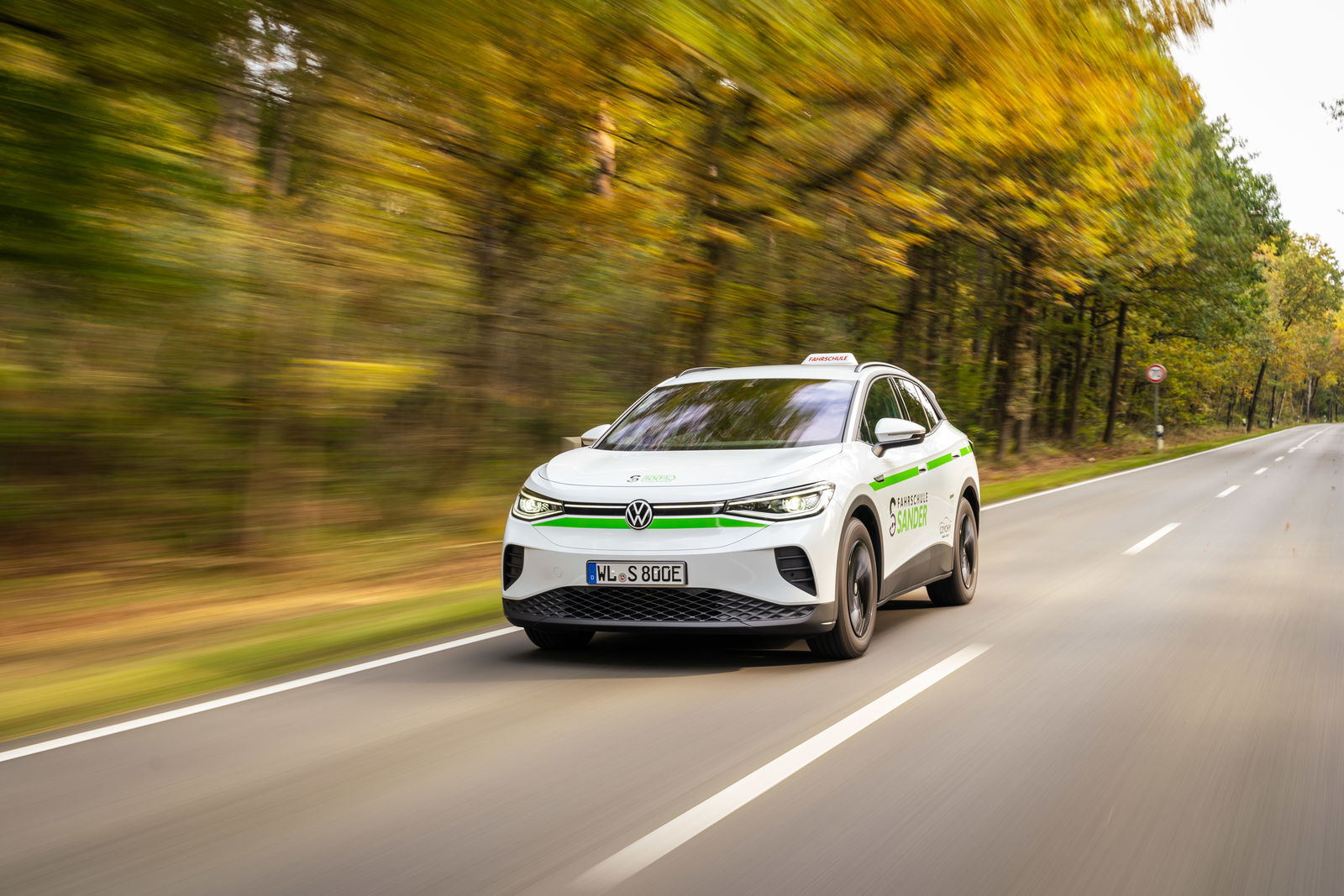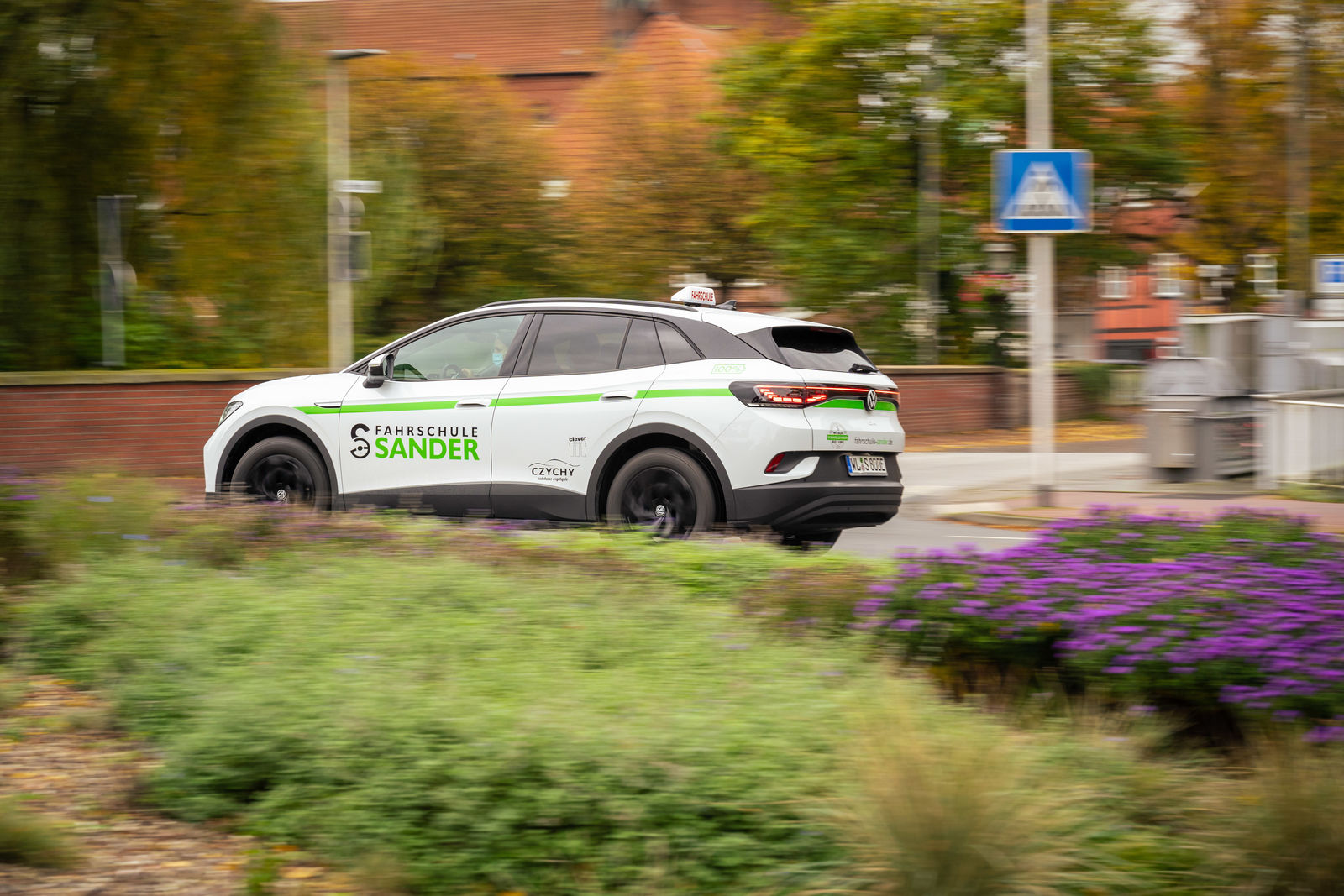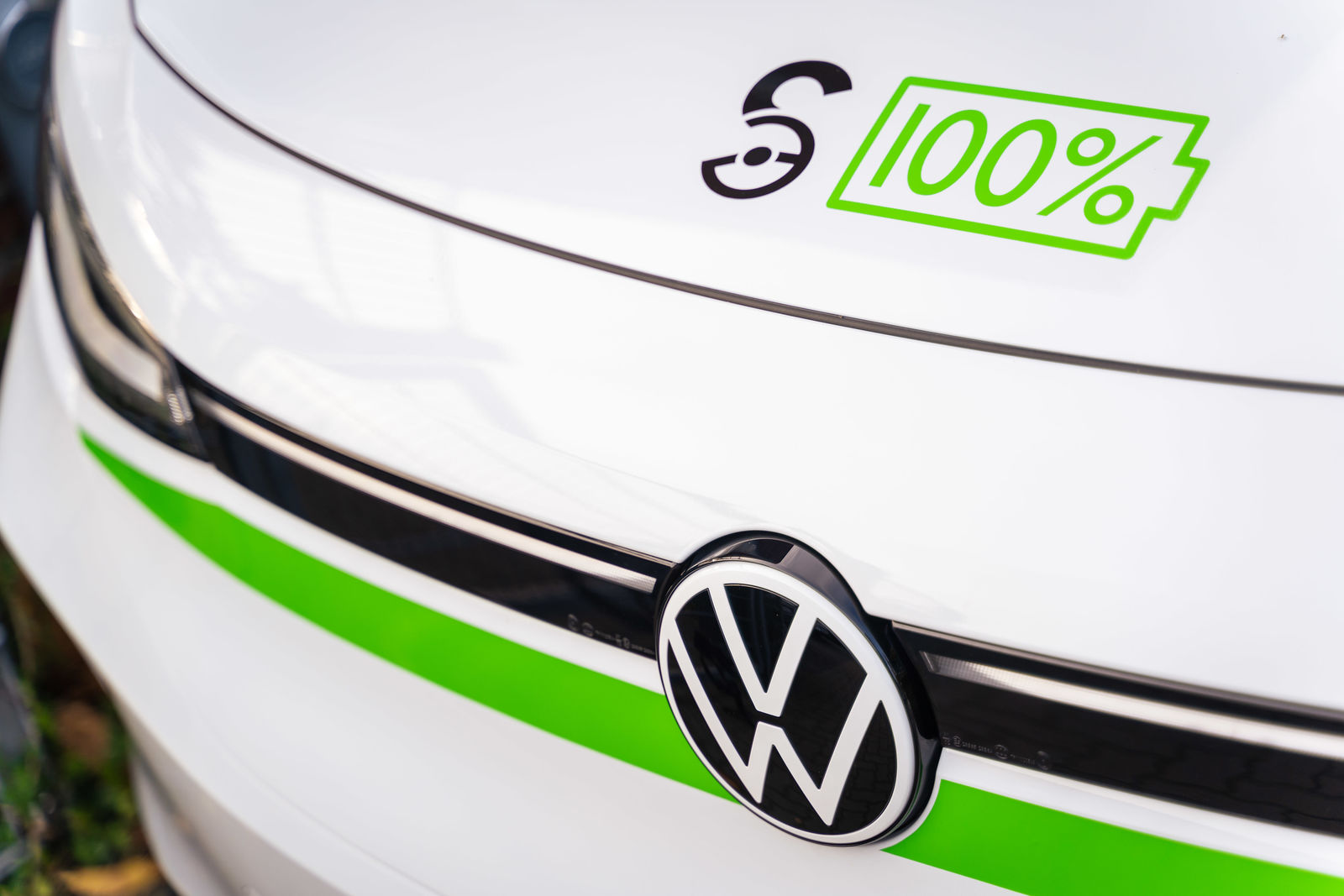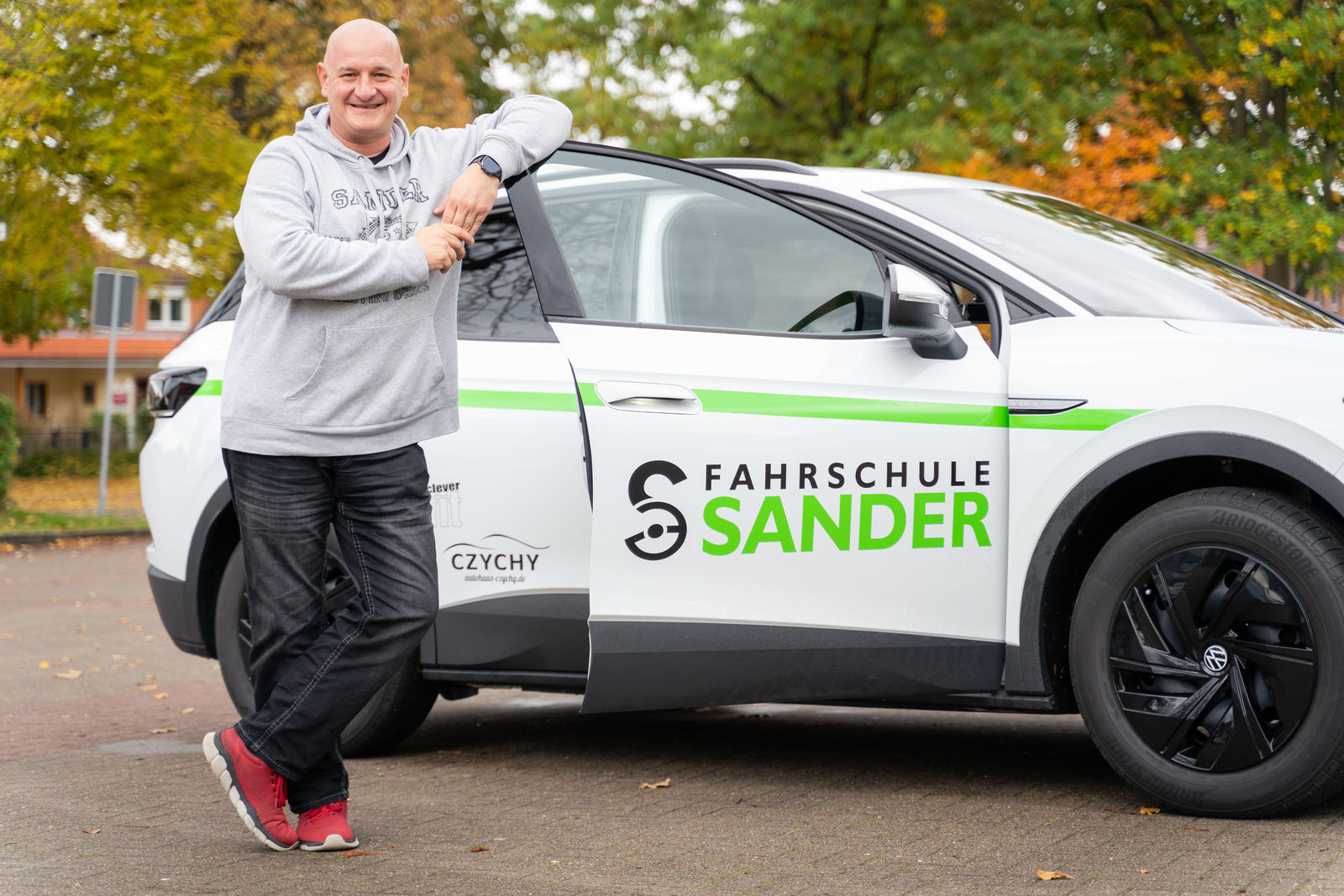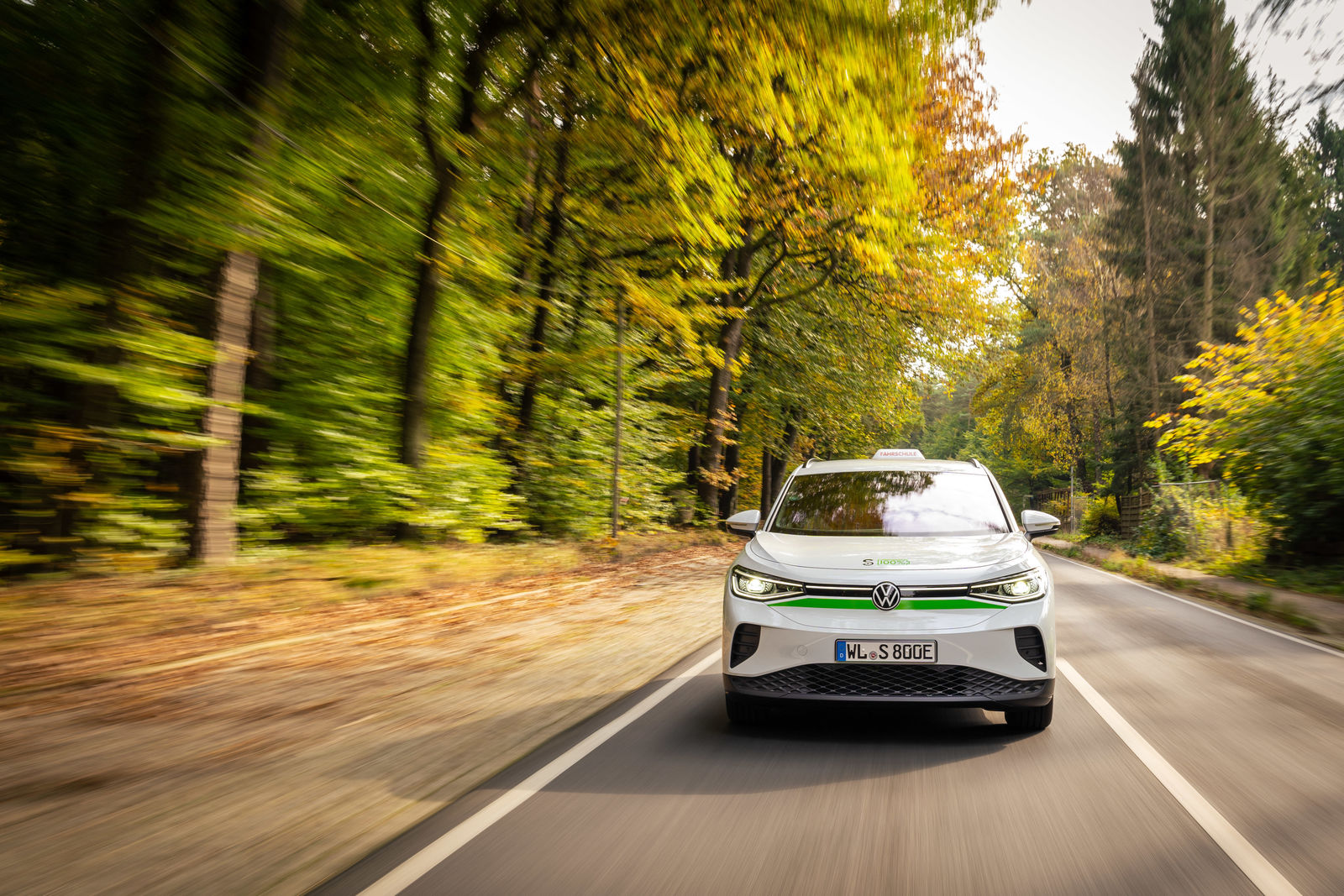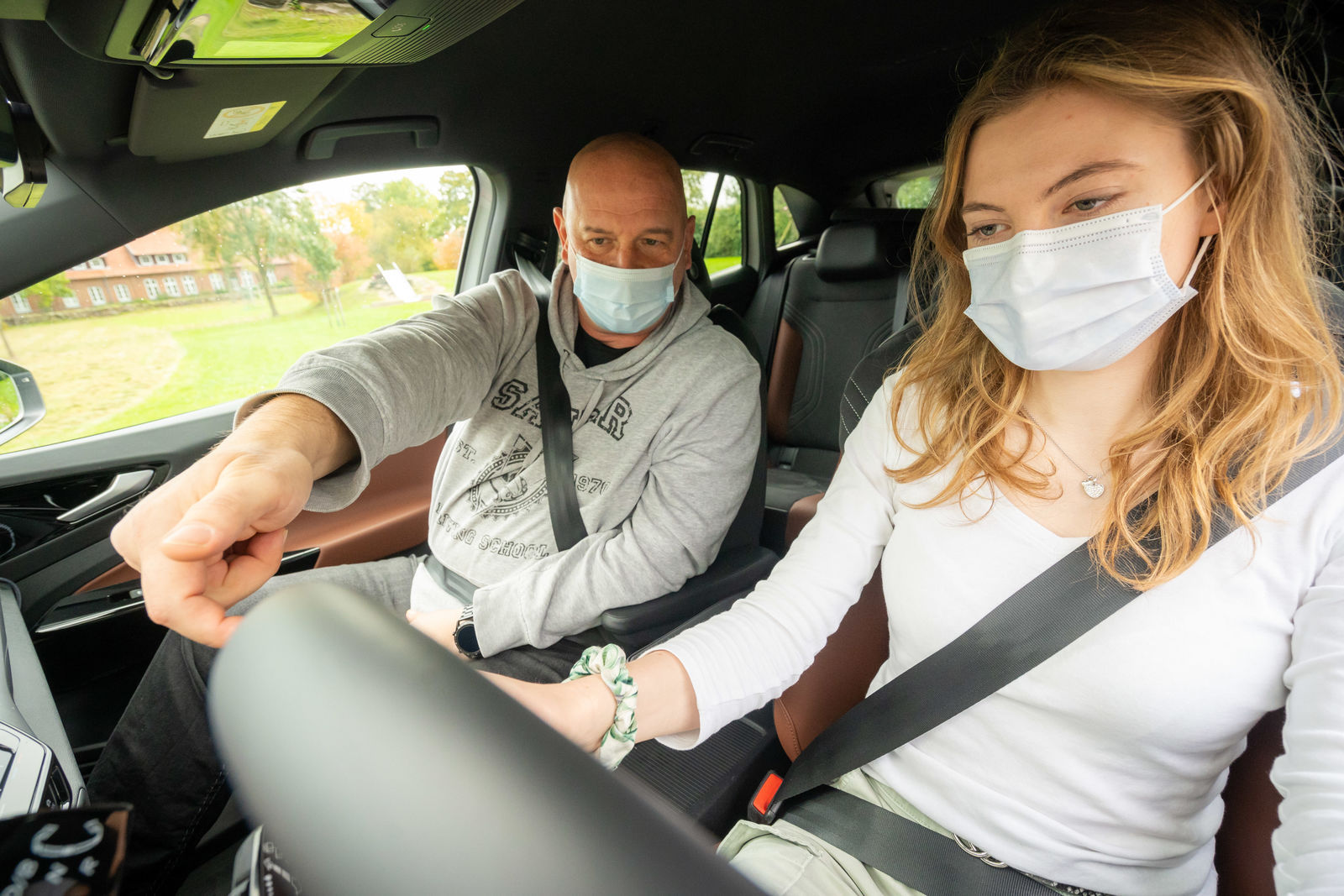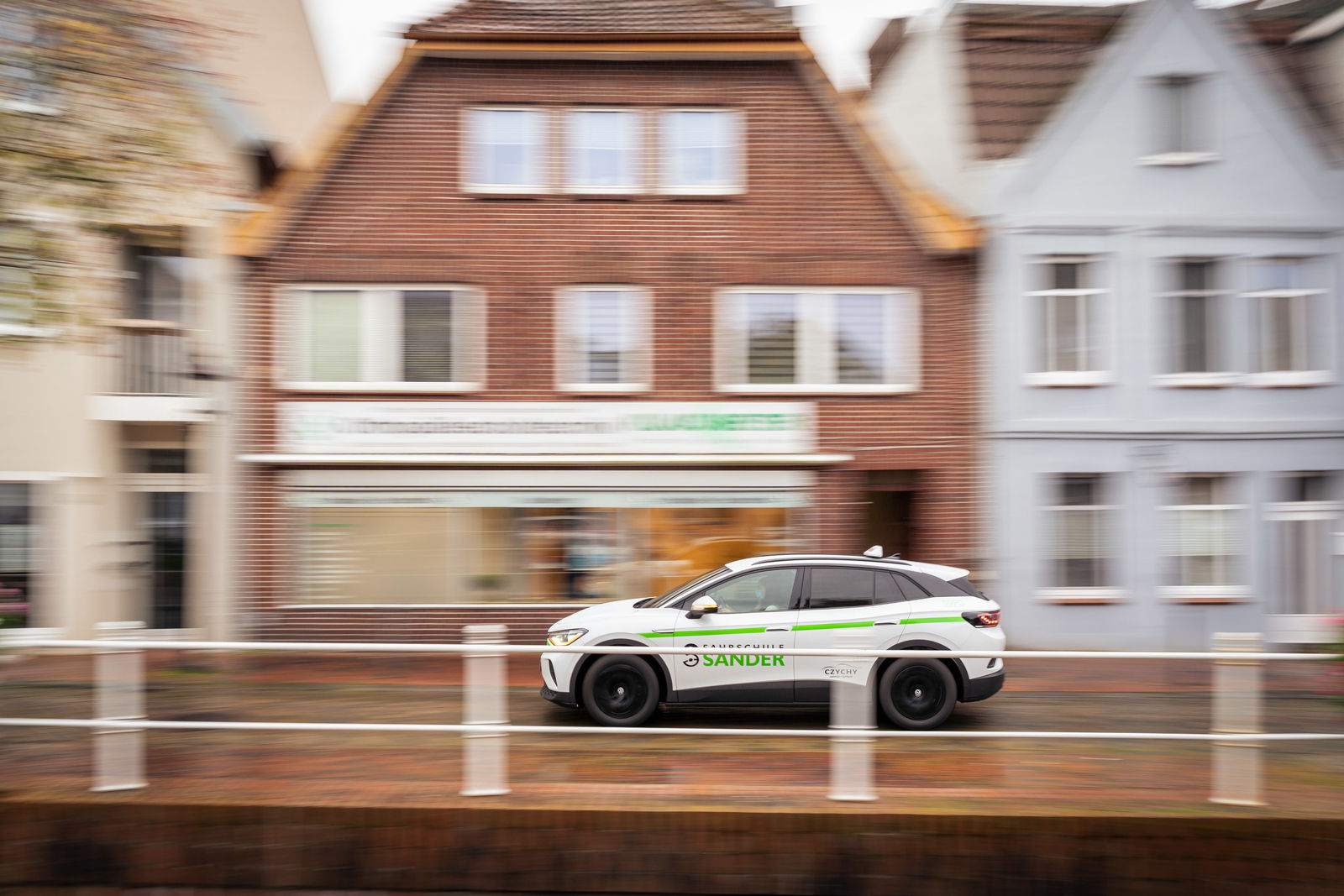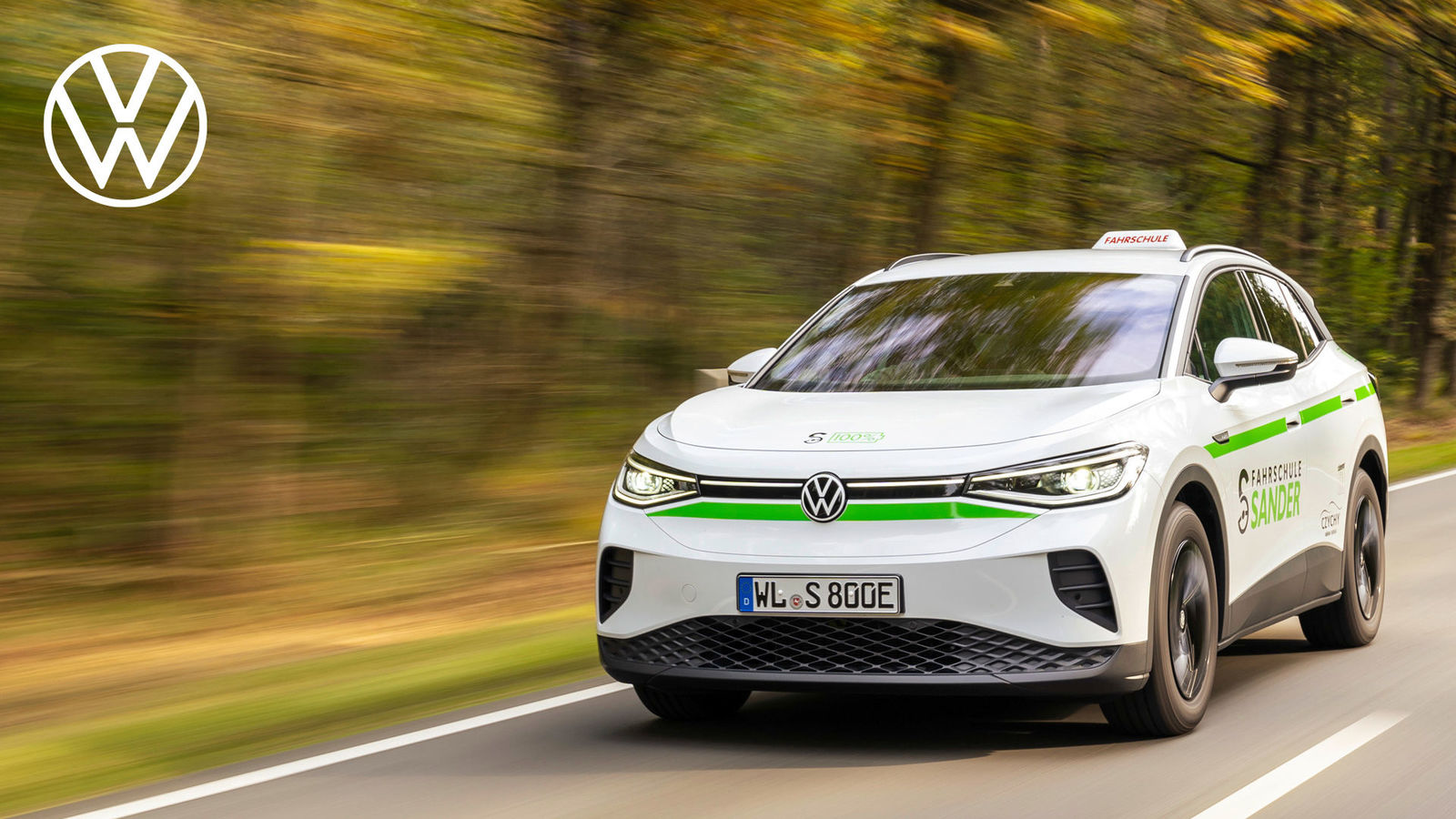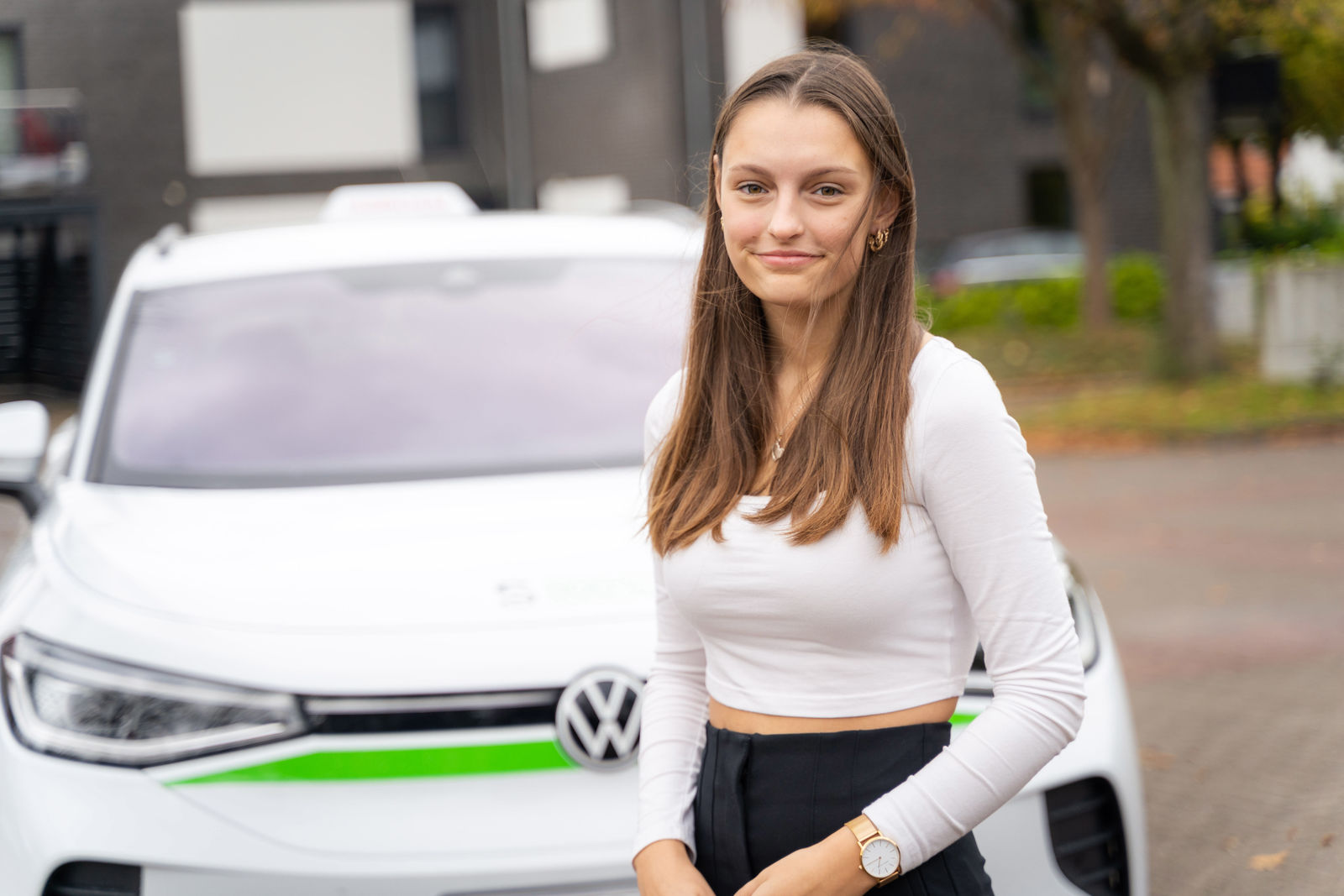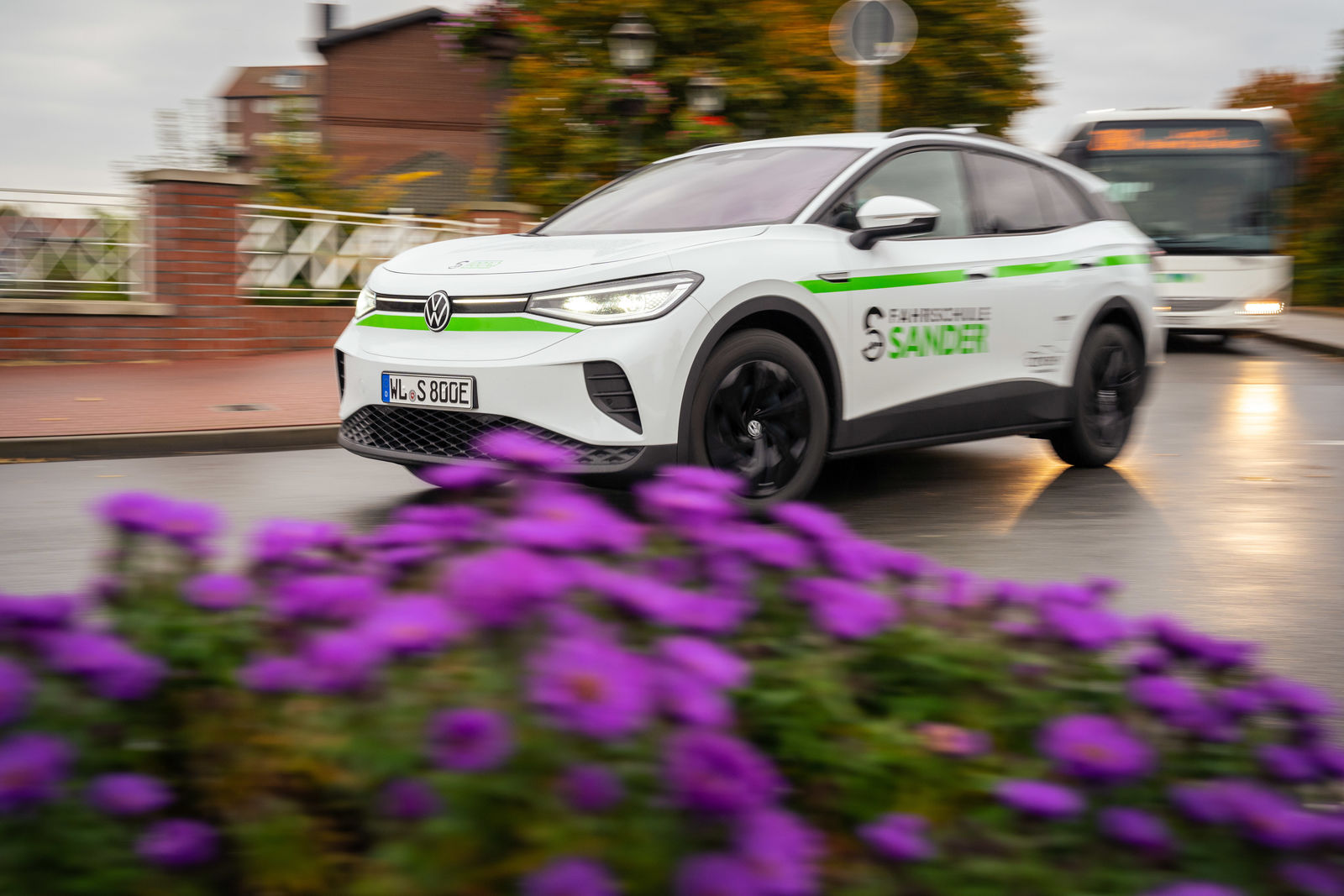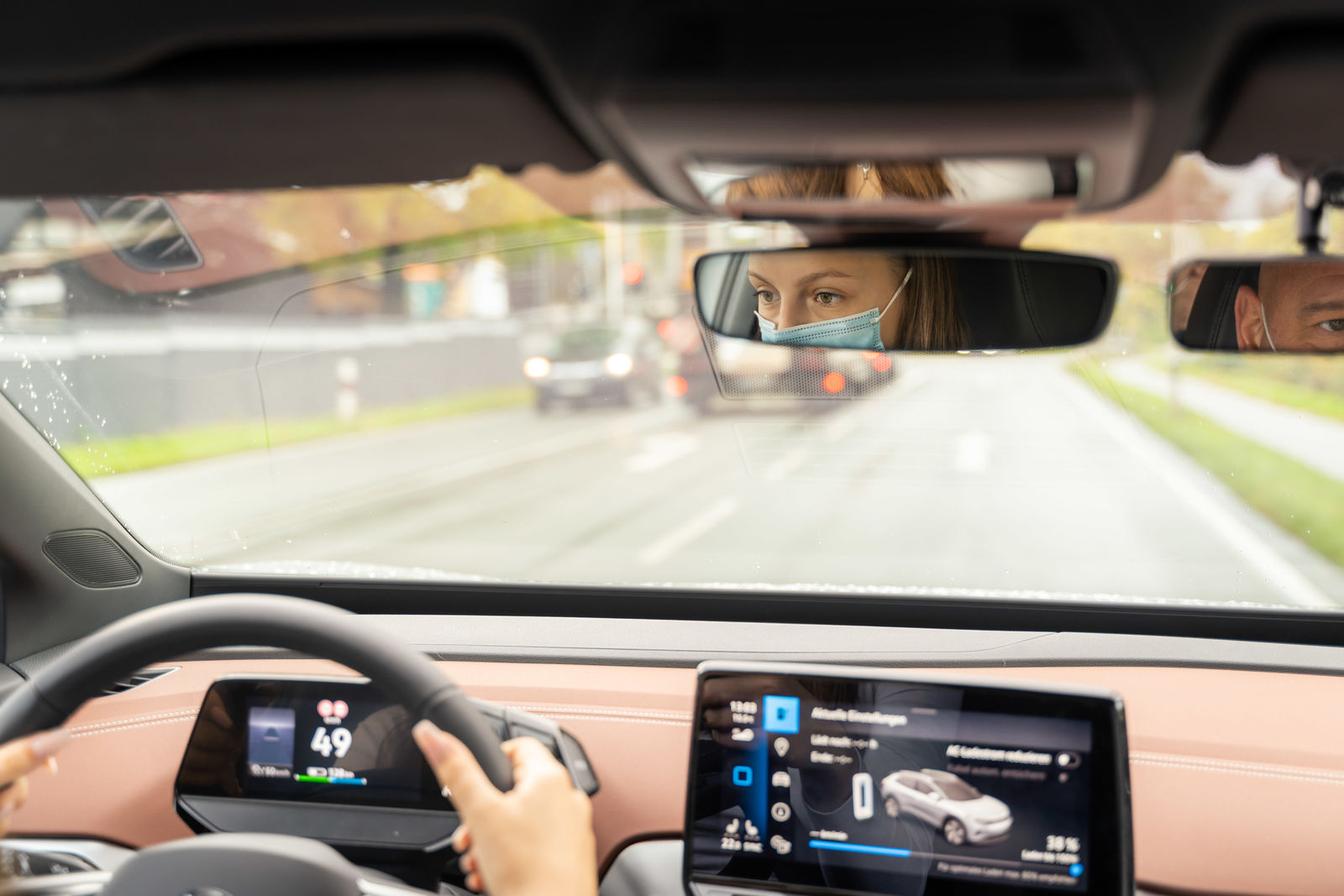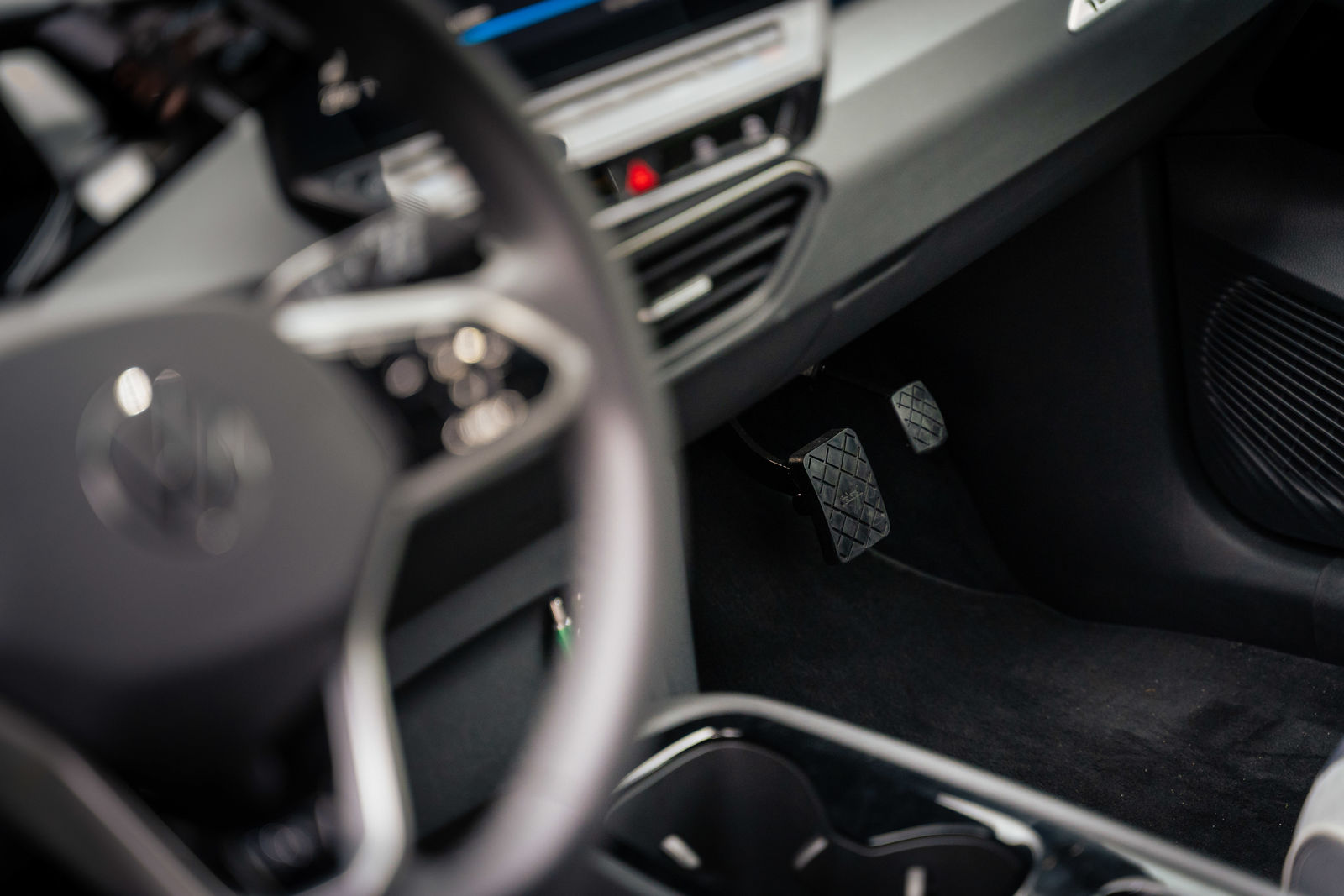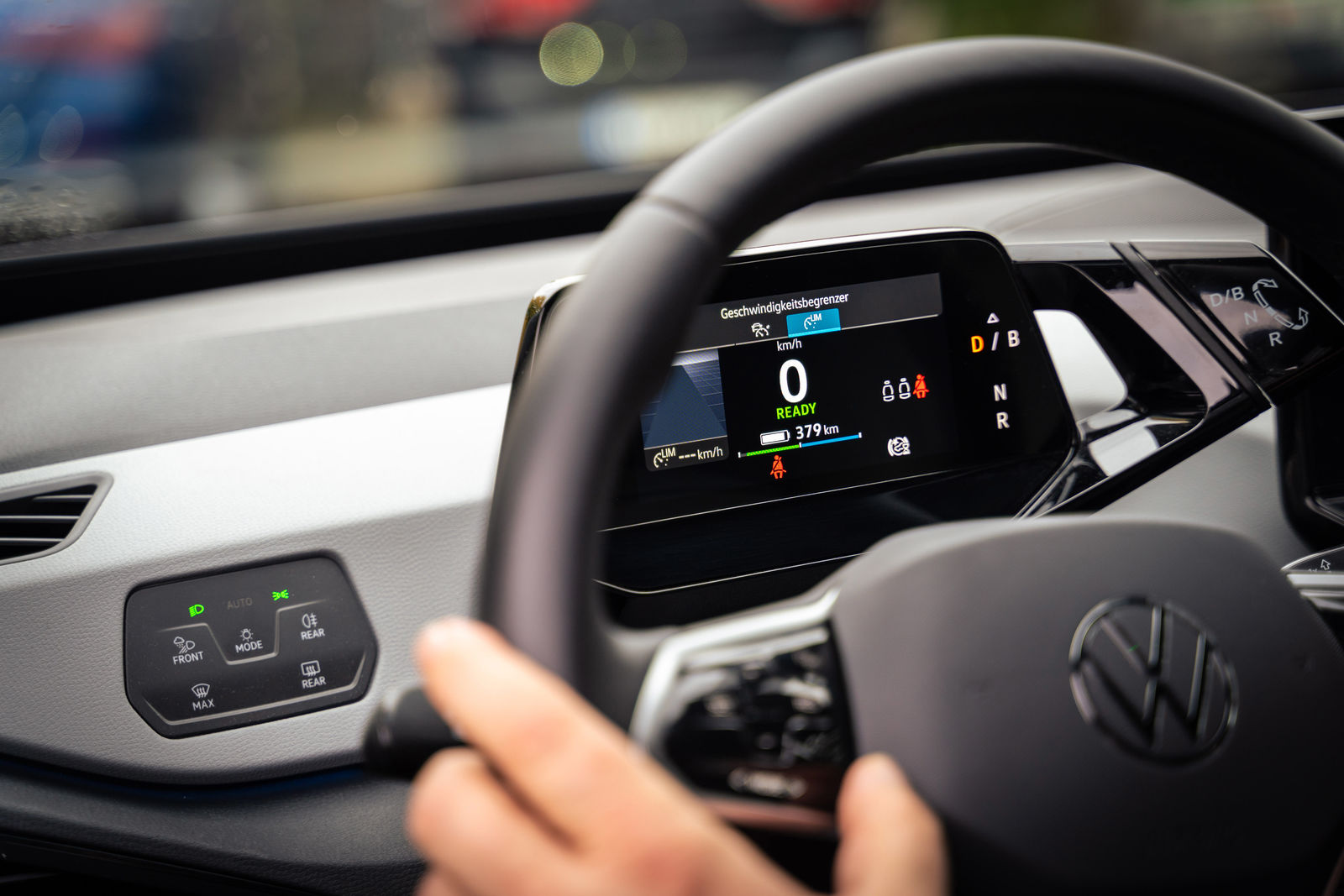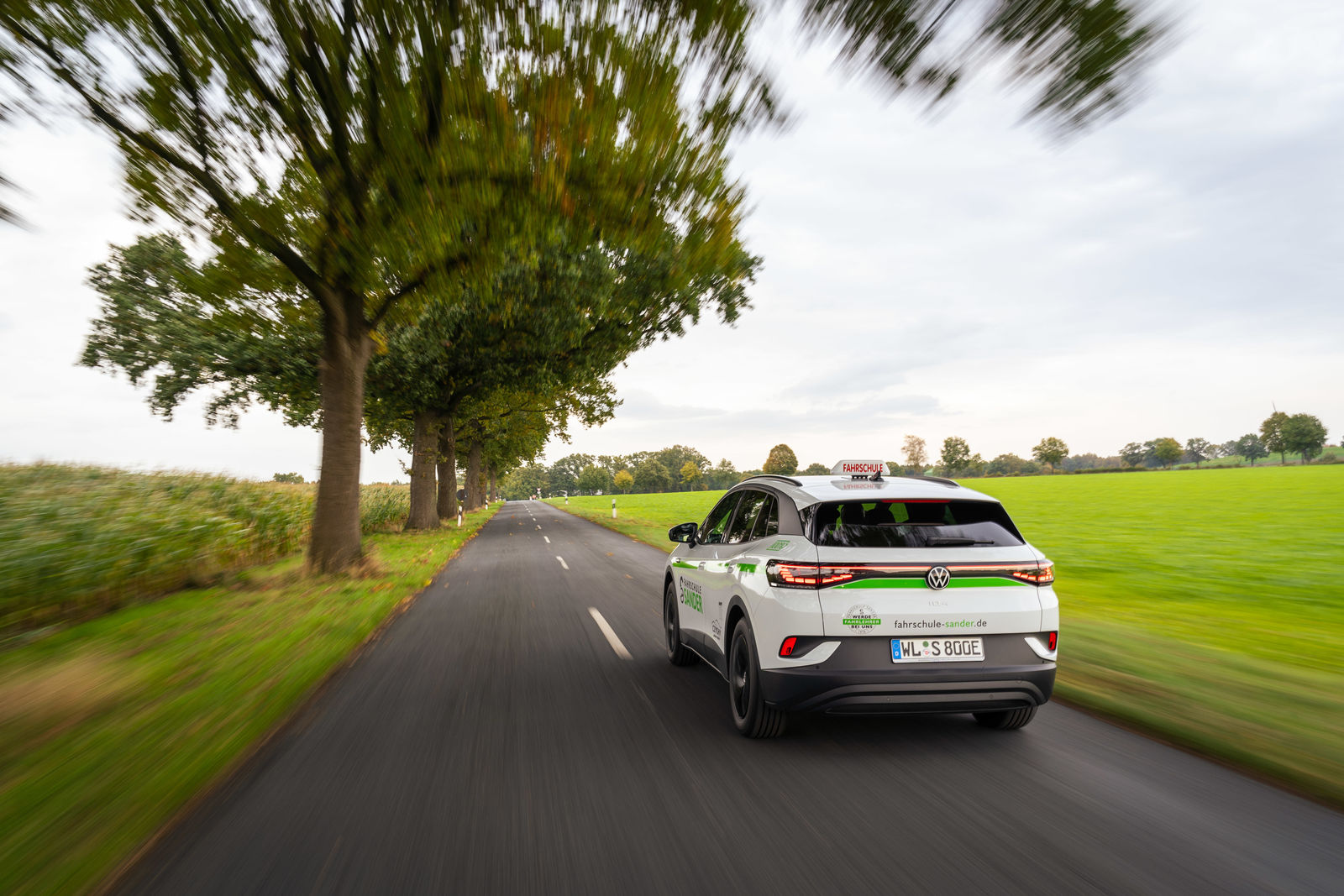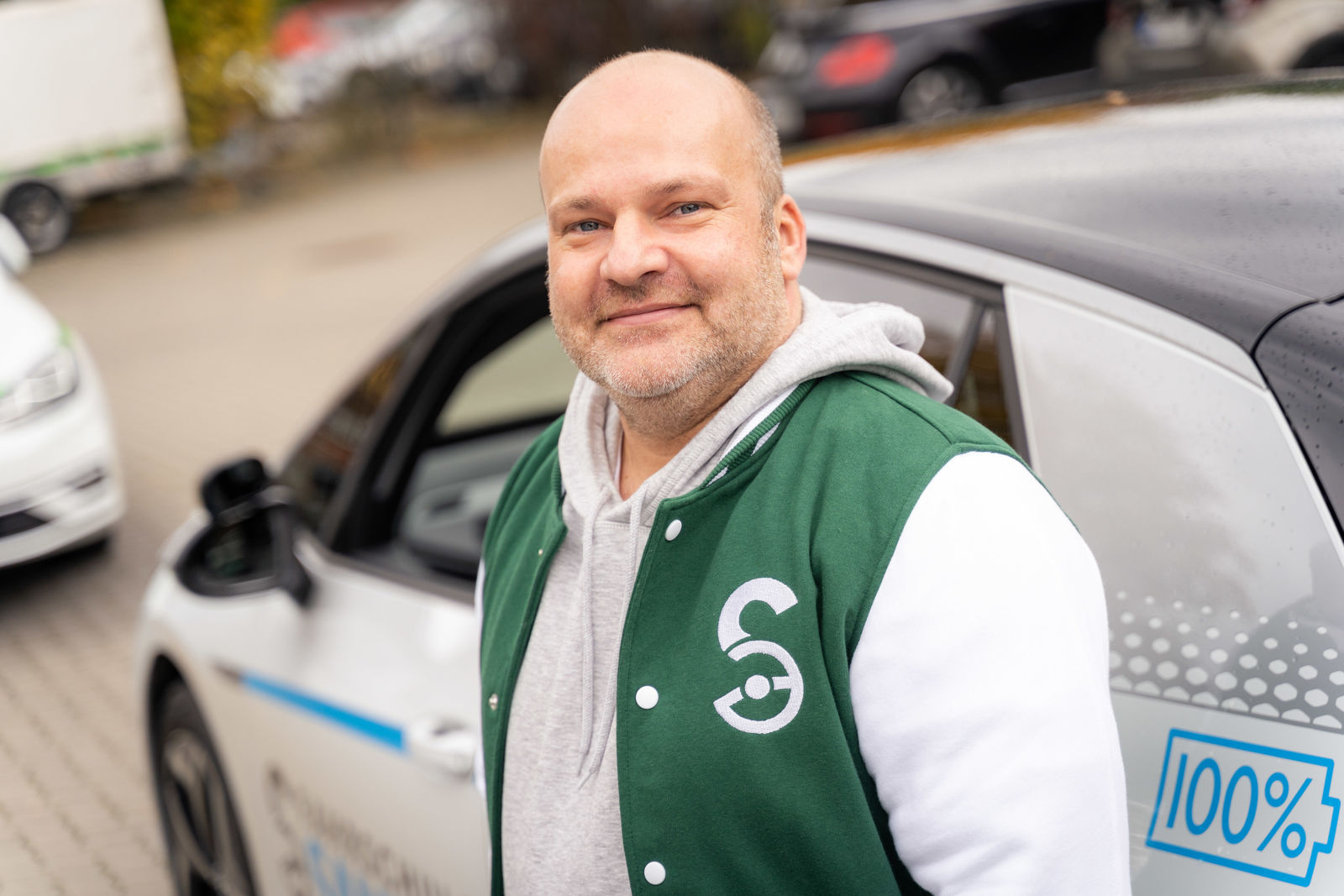Neu Wulmstorf near Hamburg. It’s a sunny late summer’s day, the car park in the Sander school of driving’s courtyard is lined with rows of cars with hints of green – which has been the distinctive colour of the family-run driving school ever since it was founded in 1970. There’s only one car that stands out with its hint of blue: the ID.3 1st. “It was our first electric car around six months ago, and we deliberately chose the striking colour to send a message,” said Malte Sander, who is the second generation to run the driving school.
“E-mobility in driving schools is a hot topic”
Switching to electric cars is a logical step for driving schools for many reasons: they are environmentally friendly, modern and reduce running costs. And last but not least, demand among learner drivers is growing – partly in response to changes to the training. Driving schools are changing their fleet of vehicles.
Combustion engines to make way for electric cars
The 43-year-old has been enthusiastically accelerating the transformation of the driving school in the direction of electric mobility ever since – the fleet now also includes four ID.4. “We currently have around 30 cars with a combustion engine in our fleet, and we want to replace as many of these as possible with electric cars. But this has to be done in line with operational processes,” explained Sander. It’s not only the costs that are a factor, the charging infrastructure is the main consideration. “As a driving school, we applied for several grants, and the first of those has now been approved. So the first step here at our HQ is to set up four charging stations.”
It also makes sense for driving schools to have electric cars from the manufacturers’ perspective. Besides the sales of cars to driving schools, the main factor is the enthusiasm among learner drivers: if you learn to drive in an electric car, it is often the case that you then want to drive an electric car. And it is not unusual for this to even be the same model in which you learned to drive and passed your test – there’s still that positive connection. It is primarily the younger generation who will be the decisive factor in determining how quickly electric cars gradually replace combustion engines on the road. Which means driving schools help form opinions.
B197 driving licence helps the transition
A change to the driving test introduced in April 2021 should make this way of learning to drive even more attractive. The B197 driving licence allows learner drivers to have lessons in a combination of cars with manual transmission and automatic transmission. They only need to have had a minimum of ten hours of lessons in a car with manual transmission. They can then take the practical test in a car with automatic transmission – including cars with electric drive, which are not available with manual transmission. This change makes it easier for driving schools to switch to electric cars. And the demand is there: “In the past six months, around 90 percent of our learner drivers have registered for the B197,” said Malte Sander.
Electric cars are perfect for everyday use
And what about the range? “A car with all-electric drive doesn’t really change anything day-to-day,” said Schäfer. “People often think that range is an issue – but it isn’t.” A driving school car covers around 300 to 350 kilometres a day on average. “What you can’t do yet is drive for 90 minutes on the motorway four or five times in a day without charging the car. But my colleagues and I only really ever have mixed days, and electric cars are perfect for that.” Also because the consumption of electric cars is the opposite of cars with a combustion engine; they use less in built-up areas than out-of-town. “Recuperation makes this possible,” Schäfer pointed out.
And it’s time for the first driving lesson of the day. Helena Reintsema is fully focussed as she drives out of the courtyard in the ID.4((ID.4 Pure – combined power consumption in kWh/100 km: 16.3–15.5 (NEDC); combined CO2 emissions in g/km: 0; efficiency class A+++.))). The learner driver has had experience with electric cars in previous lessons, but has only driven the ID.3 before. Now she is getting to know the larger ID.4. “It is definitely a different driving experience. You sit higher up and have a better overview of everything,” she said to driving instructor Schäfer, who is all for his protégés “trying out as many cars as possible” when learning to drive. While the duo cruise in the ID.4 and late summer passes by outside, Schäfer regularly incorporates elements specific to electric mobility.
New course content in driver training
As they approach a built-up area, the driving instructor says: “Please apply the brakes now, reduce your speed and recuperate.” Helena does as she is asked as if it is second nature. She and the ID.4 have already become a well-oiled team within a short period of time. Practising switching from drive mode to brake mode, where the ID.4 slows down more quickly when you take your foot off the accelerator, allowing it to recuperate more, feels “a little bit strange” to the learner driver.
However, it is important to Schäfer that his learner drivers know what the car has to offer in terms of technical features. Helena appreciates this: “I was happy the first time that I saw the electric car. It was my first driving lesson and it took some of the pressure off me because I knew that the automatic transmission would give me an easy introduction.”
After a 60-minute drive covering around 30 kilometres on out-of-town roads, the ID.4 has used up ten percent of its battery charge. There’s no need to charge the car. And no time. The next learner driver is already waiting for her turn in the electric SUV. “It’s a great new experience for me to drive an electric car. It was quite different from a car with a combustion engine to start with, but it’s more fun and it’s easier to drive,” said Lara Albes as she starts the car cautiously. Rain setting in and making the driving conditions more difficult doesn’t dampen her spirits either.
The 17-year-old is already looking forward to passing her test and being able to make use of what she has learned right away: “At home we have a conventional car and an electric car, so it’s definitely worthwhile me being able to learn to drive in an electric car as well. I expect I will be driving both cars in the future.” There was never any question as to whether she would learn to drive: “I wanted to learn to drive as soon as I could so that I can have a year of driving with my parents in the car. I really enjoy driving and we spend a lot of time in the car.” Many people feel the same as Lara: in Germany, around 840,000 new driving licences for passenger cars were issued in 2020.
After 90 minutes and around 40 kilometres in and around Buxtehude, Lara has finished her practice lesson without making any mistakes and only used eight percent of the residual power. Thanks to recuperation. So, she is well-equipped for the upcoming practical test. Around 30 learner drivers have done their driving test in an ID.3 or ID.4 at the Sander school of driving alone this year.
Plans afoot for the “driving school of the future”
According to Malte Sander, this number will rise significantly in the future, since the focus is increasingly on automatic transmission and electric cars. The manager of the driving school can see there being more driving lessons exclusively in electric cars in the future. “We need more room to be well prepared for that, we don’t have the right infrastructure,” said Sander. He would like to significantly increase the number of charging stations he owns and preferably generate the energy needed to charge the cars himself, by means of solar panels. Plans have already been drawn up and the “driving school of the future” should soon become reality – with electric mobility as a central element.
Media
